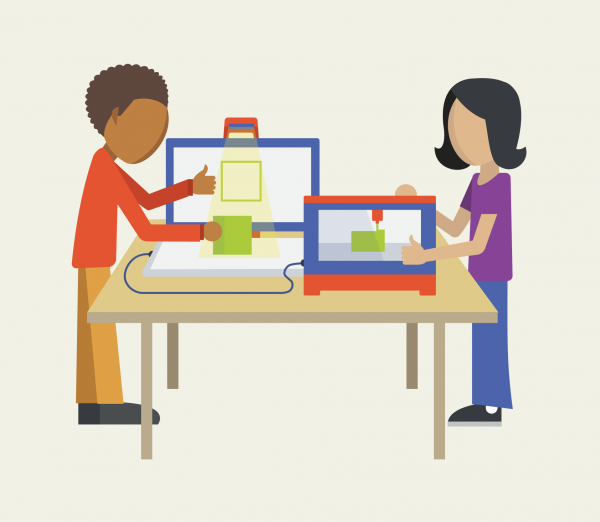
Tools/Materials Required: 3D Printer, computer
Depth of Knowledge: Skills and Concepts
Teacher’s notes are in purple. For the student’s version, see Toy Workshop Student Guide.
As your designs get larger and more complex it will become harder and harder to print them in one piece. For example, what if you wanted to build something bigger than the printer itself? Using joints and sockets, you can create interconnecting pieces to build objects limited only by your imagination.
In this lesson we will learn to create small, interconnecting parts and use them to create a toy. By the end, you will not only have an awesome toy, but the skills to create objects of any size!
Complete the project Custom Cookie Cutter as an introduction to 3D printing and TinkerCAD skills.
Make a spinning top and a toy car to learn how to create objects that require the design of separate parts.
Practice using human-centered design with the Five Chairs project to help you make your toy for a specific user.
Make a toy! Now that you’ve had some experience with interconnecting pieces, build your own toy using stiff joints, loose joints and ball joints.
**REMEMBER: If you want a cylinder to rotate in a hole (loose joint), make the diameter of the hole 0.5 mm larger than the cylinder’s. If you want the cylinder to stick in the hole (stiff joint), make the hole only 0.3 mm larger.**
Produced by Digital Promise Global, with thanks to the Open Educational Resources listed throughout this guide. Distributed to Learning Studios schools as part of HP, Inc. and Microsoft’s Reinvent the Classroom.
This work is licensed under a Creative Commons Attribution-ShareAlike 4.0 International License. You may share this project or modified versions of it under this same license.